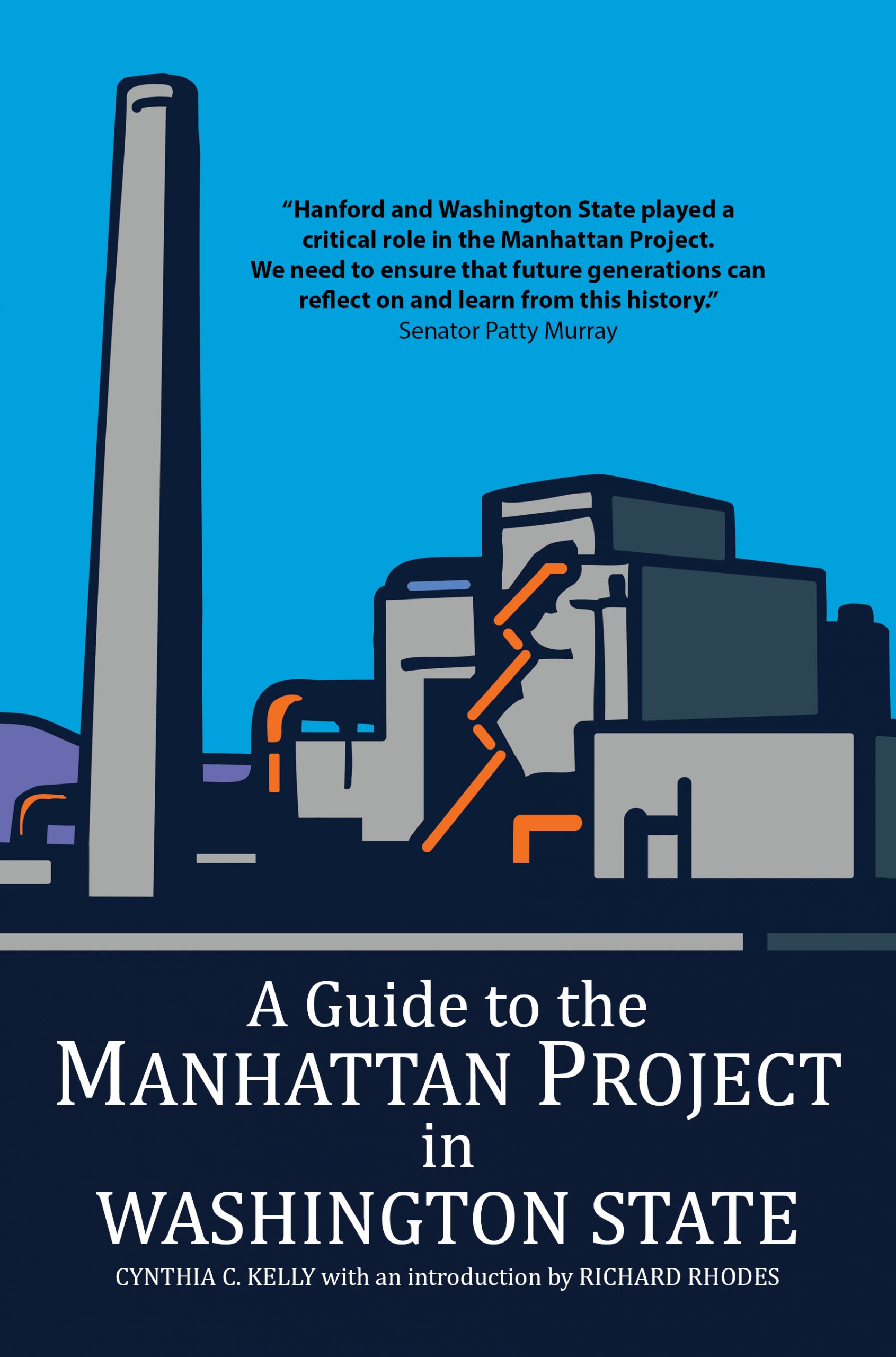The Atomic Heritage Foundation (AHF), in partnership with the B Reactor Museum Association (BRMA) and other organizations, has published a new edition of its popular, colorful guide to Manhattan Project sites in Washington State. AHF President Cindy Kelly stated, “With the Manhattan Project National Historical Park drawing thousands of new visitors, we saw the need for more comprehensive guide to Hanford’s history. Working closely with BRMA and other local contributors, we expanded the original guidebook by one-third. New sections address Native American history, contributions of African-Americans to the Manhattan Project, Hanford’s environmental legacy, and the dropping of the atomic bombs on Japan.”
Documentary photographs and excerpts from AHF’s extensive oral history collection bring to life the experiences of Hanford area residents before, during, and after World War II. B Reactor Museum Association President John Fox explained that the nature of Hanford’s operations has permanently transformed central Washington. Hanford both preserved a large natural area along a stretch of the Columbia River and yet developed a high technology work force engaged not only in handling and disposal of Hanford’s nuclear waste, but also in diverse research at Pacific Northwest National Laboratory and LIGO, the Laser Interferometer Gravitational Observatory.
Before the Manhattan Project, farmers and Native Americans resided in the Hanford area. Veronica Taylor, a member of the Nez Perce tribe, recalls how she and her tribe lived in harmony with the land before the war: “We used to camp along the riverside. Indian people used to fish and gather the roots and the berries, for medicine and for trading purposes. A lot of the different tribes used to come here and participate in those activities.”
In 1943, the Army condemned 670 square miles of property in the Columbia Basin for plutonium production under the Manhattan Project. Federal government officials evicted Native Americans, farmers, and others who lived in the area. About 1,500 residents, including those living in the communities of Hanford, White Bluffs, and Richland, were given between 30 and 90 days’ notice (60 days being most common) to abandon their homes and farmlands. Today, visitors can tour the remaining pre-war sites including the Bruggemann Warehouse, the recently restored White Bluffs Bank, and the Hanford High School.
When the Manhattan Project took over the land, workers quickly began to build the world’s first full-scale nuclear reactor, the B Reactor, and its support buildings; chemical separation plants; and new towns and communities for workers and their families. During the construction period, about 45,000 workers lived in the Hanford Construction Camp, and it was among the five largest cities in Washington. Eight mess halls served 19,500 diners fresh baked bread, pies, and pastries along with balanced meals. In Richland, standardized “Alphabet Houses” sprung up for families.
 employee repairing tire inner tube cropped_1.jpg)
The guidebook highlights the contributions of African-American workers, who provided essential labor for building the facilities and helped to transform the Tri-Cities. Racism and segregation accompanied these demographic changes. The Manhattan Engineer District ensured that African-Americans never constituted more than 10-20% of the employees at Hanford. Housing at the Hanford Camp was segregated, while dining halls, sports teams, and restrooms were integrated.
As journalist S. L. Sanger noted, “Building Hanford was like constructing seven major industrial plants at the same time.” Producing plutonium at Hanford involved three major operations: fuel fabrication, reactor operations, and chemical separation to extract the plutonium. The guidebook describes the different operations and processes, how railroads facilitated the work on the site, and the environmental legacy and ongoing cleanup at the site today.
The plutonium produced at Hanford was used in the “Fat Man” atomic bomb, which was dropped on the Japanese city of Nagasaki on August 9, 1945. A new section focuses on the atomic bombings of Hiroshima and Nagasaki, the controversy around the decision to use the atomic bombs, and the impact of the bombings on Japan.
In addition to the Manhattan Project properties, the guidebook covers sites that played important roles in World War II and the Cold War. For example, the Pasco Naval Air Station trained nearly 1,900 cadets flying over 260,000 hours, making Pasco the third busiest naval air training station in the United States. At the Port of Benton in Richland, WA, the USS Triton Submarine Memorial Park honors the United States Navy’s nuclear fleet and its sailors. Also highlighted is the Bainbridge Island Japanese American Exclusion Memorial, which bears the names of the 276 Japanese and Japanese Americans who were forced to leave the island in 1942.
One of the goals of the guidebook is to encourage heritage tourism to the Tri-Cities and the Manhattan Project National Historical Park (NHP). The guide explains how to plan your visit to the Hanford unit of the Manhattan Project NHP, nearby interpretive centers including the Hanford Reach Interpretive Center and the Wanapum Heritage Center, and other attractions. Also included are suggested resources on Manhattan Project history and a nuclear history chronology.
The Atomic Heritage Foundation is very grateful to the B Reactor Museum Association for its close collaboration on the guidebook and to our other partners including the Hanford History Project, Hanford Reach Interpretive Center, Indian Eyes, National Park Service, Port of Benton, Tri-City Development Council, U.S. Department of Energy-Richland, Visit Tri-Cities, and Washington State Historical Society. AHF would like to thank the financial supporters of the guidebook: City of Richland, M. J. Murdock Charitable Trust, and Elizabeth and Warren Dean in memory of Manhattan Project veteran Watson C. Warriner, Sr.
The guidebook can be purchased online on AHF’s online store, Amazon, and at museum shops and other stores around the country.





